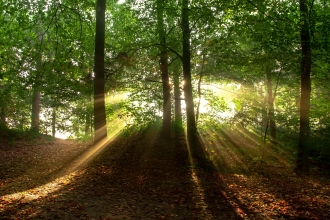This new thriving landscape will create a diverse range of species-rich habitats and deliver a range of critical ecosystem services, helping to alleviate the risks of flooding and soak up the carbon that is driving our climate crisis.
About the Derwent Valley
The Derwent Valley derives its name from the Brittonic ‘Deruentiū’, meaning forest of oak trees. Where once a dense forest of oak trees stood, abundant with wildlife, the Derwent Valley now consists largely of urban areas and grassland, with around 7% woodland cover. Not only have we lost significant areas of woodlands, but with them also many species, including plants, insects and mammals. Those that have not been lost have experienced significant declines. Coupled with the climate crisis causing more heavy rainfall, the Derwent River is now exceptionally prone to flooding.
The Derwent Connections Project will kickstart woodland creation across the Derwent River catchment and see the development of natural flood management projects, whilst making more space for nature and creating essential green corridors to support a wealth of wildlife and species migration.







